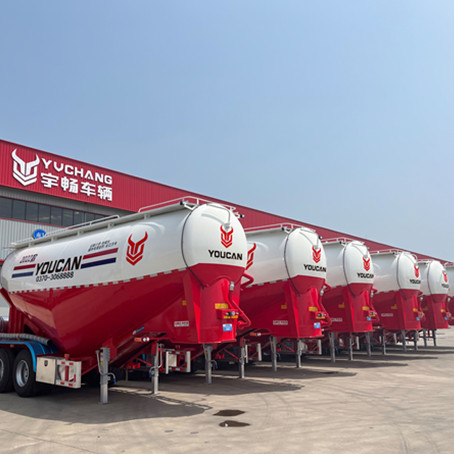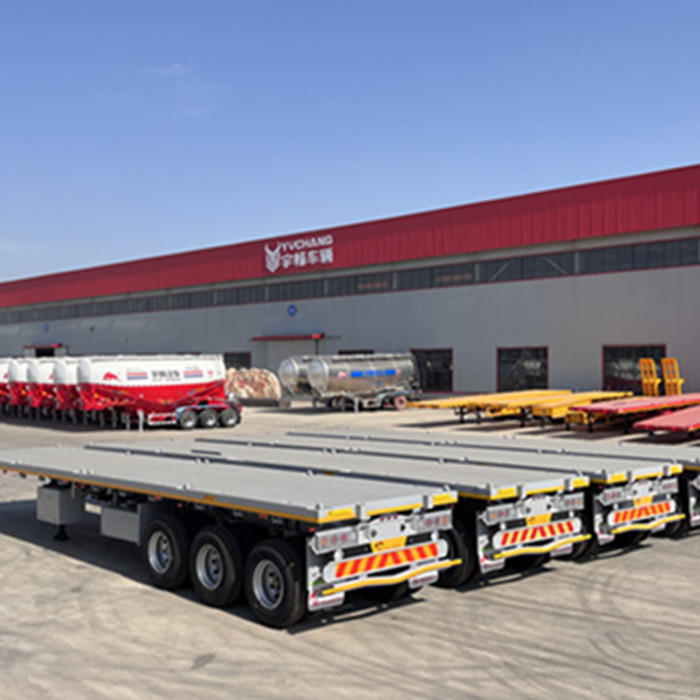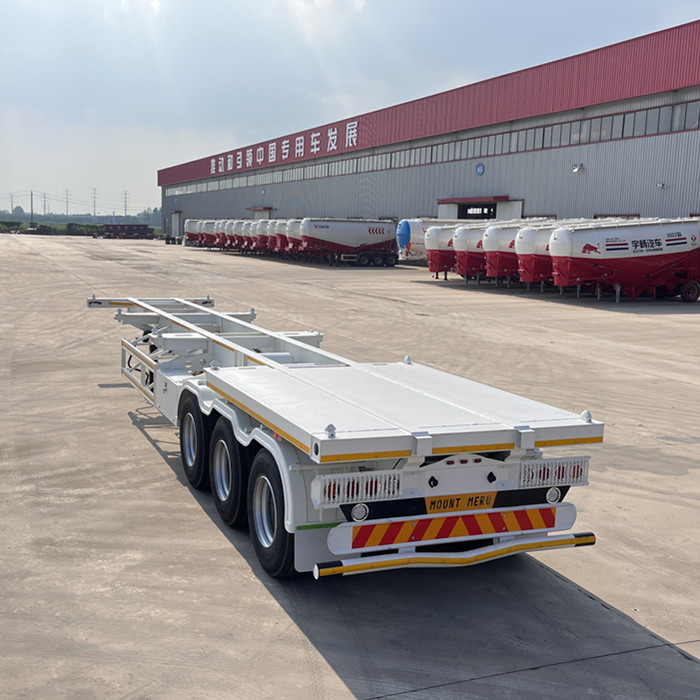How to unload and load dry bulk cement tanker trailer
After we bought a cement tanker, we need to know how to use it. Then Youcan introduces some unloading and loading in detail, I hope it will be helpful to everyone.
1) What is a dry bulk cement tanker?
Cement tankers are also known as pneumatic dry bulk trailers, powder tankers or bulk trailers.
The cement bulk truck is used to transport cement, lime, sand and various bulk powder materials with diameter ≤0.1mm.
Youcan dry bulk trailer capacity: 28 to 120 tons, volume: 22 to 100 cubic meters.

2) How to load the cement tanker?
1. Before loading cement on the cement trailer, be sure to open the exhaust valve to ensure that the air in the tank has been discharged to prevent accidents.
2. Open the manhole cover, place the filter, and then put cement or other dry powder materials with a diameter of not more than 0.1mm through the manhole cover.
3. After loading, wipe off the cement on the sealing ring and cover the well.
4. Finally, close the exhaust valve and check whether the butterfly valve exhaust valve is closed to avoid loss during transportation.
3) How does the cement tanker work?
The working principle of the cement tanker is to use the power of the trailer to operate the air compressor. Compressed air is then piped to an air chamber below the sealed tank, suspending the particles inside. When the pressure in the tank reaches a certain value, the discharge valve can be opened at this time, so that the material in the tank is transported through the pipeline. Related: How Do Pneumatic Trailers Work?
5) How to safely unload the cement tanker trailer?
1. The discharge pipe should be connected first. When the discharge pipe is connected, the sealing ring should be closed; the inlet and outlet valves of the front and rear air chambers should be opened first and then closed: pressure relief ball valve, external air source ball valve, secondary air ball valve, discharge butterfly valve.
2. Start the engine, be sure to start smoothly, and then start the air compressor smoothly, gradually increase the throttle to make the air compressor reach the rated speed, thereby inflating the fuel tank.
3. When the pressure rises to 0.15Mpa, open the secondary air ball valve, clear the discharge pipe, make sure that the discharge pipe is not blocked, and close the secondary air ball valve.
4. When the pressure is 0.2Mpa, the discharge butterfly valve should be opened to start unloading.
unloading cement bulk carrier
5. Close the front air chamber inlet valve, only let the rear air chamber take in air, and then observe the pressure gauge. If the pressure gauge rises, there is no unloading. When the pressure increases to 0.02Mpa, the pressure will not drop at this time.
6. Shows that the rear is unloaded. If the pressure value does not rise, the rear has been emptied. When it is determined that the rear is unloaded, the front air chamber opens into the air bag valve. The principle is the same for the rear air chamber.
7. The final step is to confirm that there is no residue in the front and rear air chambers. It is possible to turn off the engine, turn off the air compressor, open the pressure relief ball valve, close the discharge butterfly valve, remove the unloading quick connector, and then remove the hose. Put it back in the car and the unloading job is done.

 WhatsApp
WhatsApp
 sales@youcantrailer.com
sales@youcantrailer.com
 +8615203709888
+8615203709888


